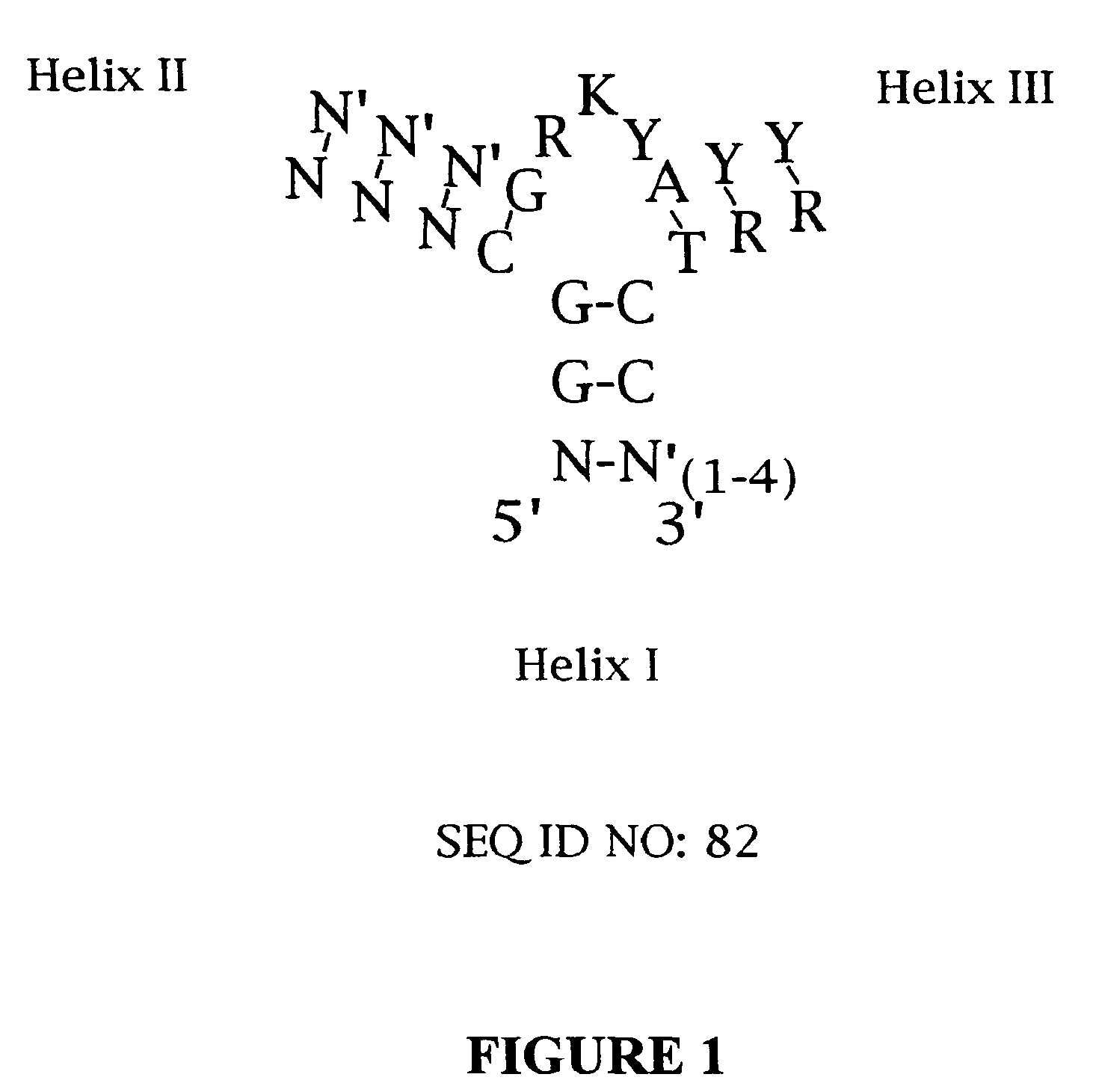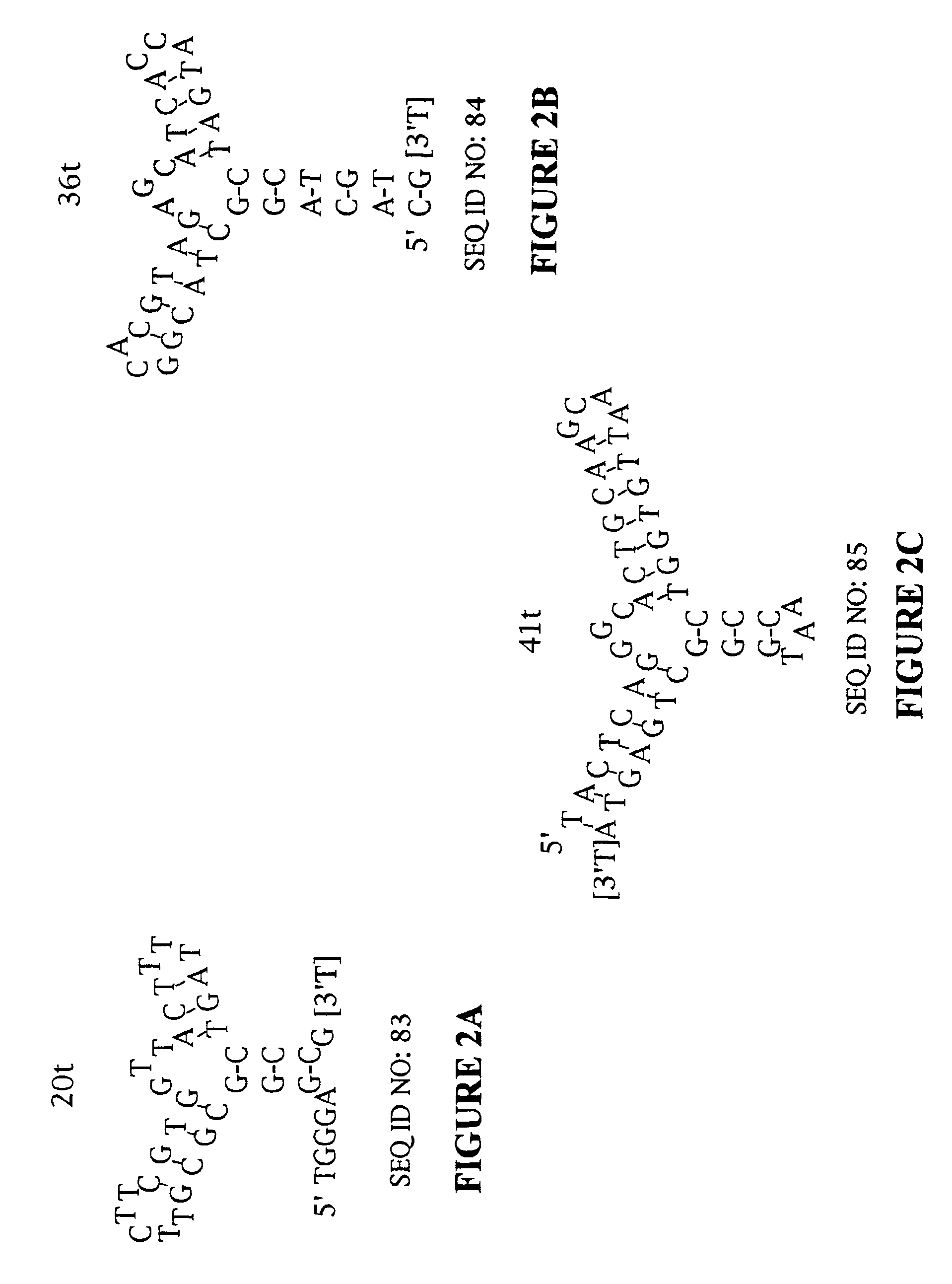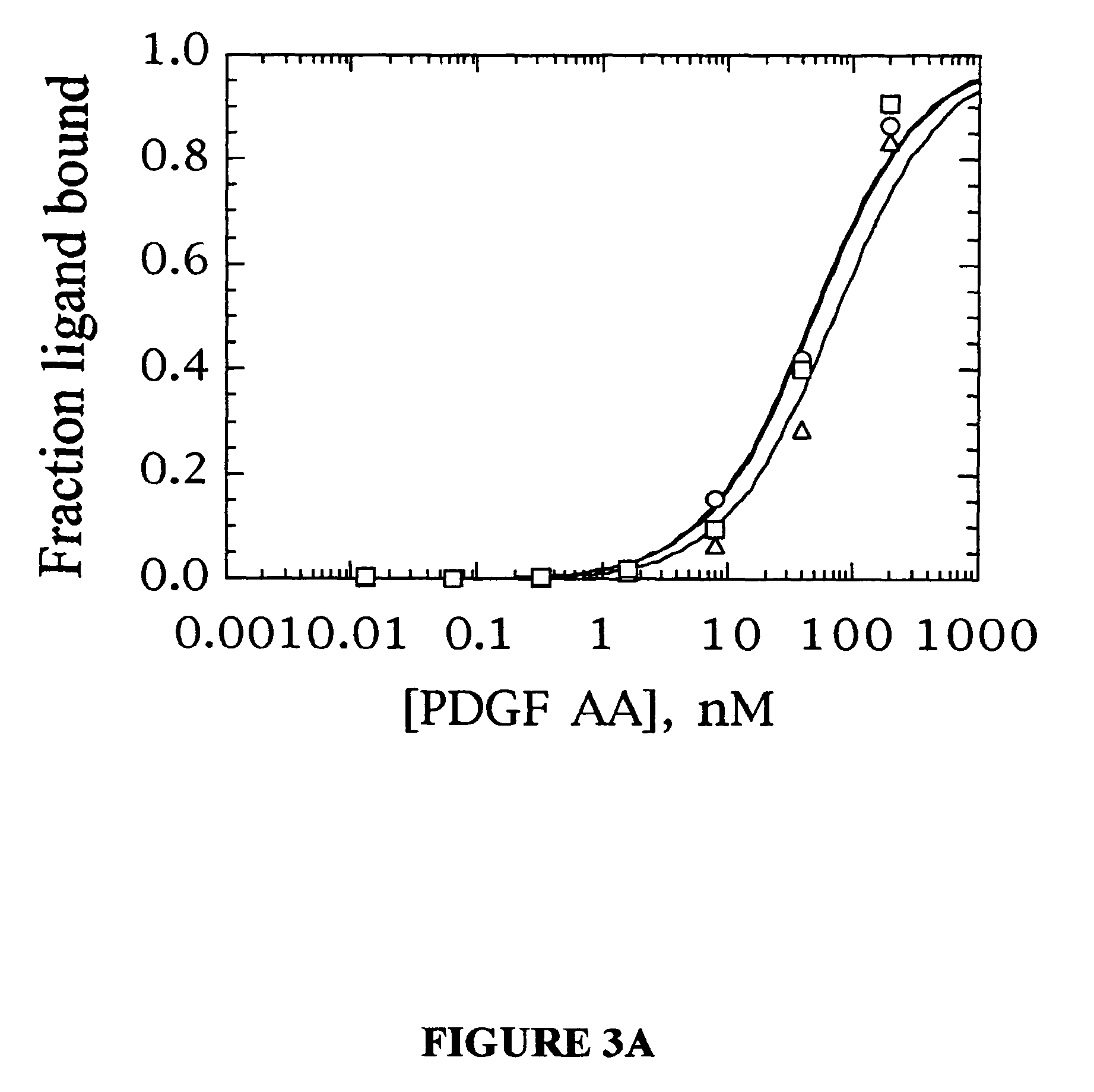Platelet derived growth factor (PDGF) nucleic acid ligand complexes
a technology of nucleic acid ligands and platelet derived growth factors, which is applied in the direction of peptides, cardiovascular disorders, drug compositions, etc., can solve the problems of inability to efficiently degrade oligonucleotides in their phosphodiester form, and inability to carry out intravenous delivery. , to achieve the effect of inhibiting pdgf-mediated diseases, inhibiting angiogenesis
- Summary
- Abstract
- Description
- Claims
- Application Information
AI Technical Summary
Benefits of technology
Problems solved by technology
Method used
Image
Examples
example 1
Experimental Procedures
[0150]This example provides the general procedures followed and incorporated in Examples 2-4.
Materials
[0151]Recombinant human PDGF-AA (Mr=29,000), PDGF-AB (Mr=27,000) and PDGF-BB (Mr=25,000) were purchased from R&D Systems (Minneapolis, Minn.) in lyophilized form, free from carrier protein. All three isoforms were produced in E. coli from synthetic genes based on the sequences for the long form of the mature human PDGF A-chain (Betsholtz et al. (1986) Nature 320:695-699) and the naturally occurring mature form of human PDGF B-chain (Johnsson et al. (1984) EMBO J. 3:921-928). Randomized DNA libraries, PCR primers and DNA ligands and 5′-iodo-2′-deoxyuridine-substituted DNA ligands were synthesized by NeXstar Pharmaceuticals, Inc. (Boulder, Colo.) or by Operon Technologies (Alameda, Calif.) using the standard solid phase phosphoramidite method (Sinha et al. (1984) Nucleic Acids Res. 12:4539-4557).
Single Stranded DNA (ssDNA) SELEX
[0152]Essential features of the SE...
example 2
ssDNA Ligands of PDGF
[0165]High affinity DNA ligands to PDGF AB were identified by the SELEX process from a library of ˜3×1014 molecules (500 pmol) of single stranded DNA randomized at forty contiguous positions (Table 1) (SEQ ID NO:1). The PDGF-bound DNA was separated from unbound DNA by polyacrylamide gel electrophoresis in the first round and by nitrocellulose filter binding in the subsequent rounds. After 12 rounds of SELEX, the affinity-enriched pool bound to PDGF-AB with an apparent dissociation constant (Kd) of ˜50 pM (data not shown). This represented an improvement in affinity of ≈700-fold compared to the initial randomized DNA library. This affinity-enriched pool was used to generate a cloning library from which 39 isolates were sequenced. Thirty-two of these ligands were found to have unique sequences (Table 2) (SEQ ID NOS: 4-35). Ligands that were subjected to the minimal sequence determination are marked with an asterisk (*) next to the clone number. The clone numbers t...
example 3
Minimal Ligand Determinations
[0168]The minimal sequence necessary for high affinity binding was determined for six of the best ligands to PDGF-AB. In general, the information about the 3′ and 5′ minimal sequence boundaries can be obtained by partially fragmenting the nucleic acid ligand and then selecting for the fragments that retain high affinity for the target. With RNA ligands, the fragments can be conveniently generated by mild alkaline hydrolysis (Tuerk et al. (1990) J. Mol. Biol. 213: 749-761; Jellinek et al. (1994) Biochemistry 33:10450-10456; Jellinek et al. (1995) Biochemistry 34:11363-11372; Green et al. (1995) J. Mol. Biol. 247:60-68). Since DNA is more resistant to base, an alternative method of generating fragments is needed for DNA. To determine the 3′ boundary, a population of ligand fragments serially truncated at the 3′ end was generated by extending the 5′ end-labeled primer annealed to the 3′ invariant sequence of a DNA ligand using the dideoxy sequencing method....
PUM
 Login to View More
Login to View More Abstract
Description
Claims
Application Information
 Login to View More
Login to View More - R&D
- Intellectual Property
- Life Sciences
- Materials
- Tech Scout
- Unparalleled Data Quality
- Higher Quality Content
- 60% Fewer Hallucinations
Browse by: Latest US Patents, China's latest patents, Technical Efficacy Thesaurus, Application Domain, Technology Topic, Popular Technical Reports.
© 2025 PatSnap. All rights reserved.Legal|Privacy policy|Modern Slavery Act Transparency Statement|Sitemap|About US| Contact US: help@patsnap.com



